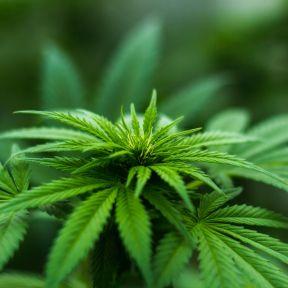Stunning Research Suggests a Mechanism for Cannabis "Chill". Too much of a good thing during adolescence may be a problem later in life. Reviewed by Jessica Schrader

KEY POINTS-
- Many regular cannabis users praise the "chill" they feel—an unperturbed resistance to stress.
- Exposure to THC during adolescence shows persisting effects in early adulthood that may explain this "chill."
- A reduced response to social stress feels great but may leave people less resilient later in life.
The “chill” produced by cannabis generally means being calm, relaxed, laid-back, and feeling little stress or anxiety. Being chill is highly valued by cannabis users. "Hakuna matata," no trouble, unperturbable. Among some regular cannabis users, chill becomes a lifestyle.
New research from Daniele Piomelli’s lab now points to a possible neurologic mechanism that contributes to an ongoing sense of chill in adolescent-onset cannabis users. Despite the great geeky complexity of his recent article (“Frequent Low-Dose Δ9-Tetrahydrocannabinol in Adolescence Disrupts Microglia Homeostasis and Disables Responses to Microbial Infection and Social Stress in Young Adulthood,” Dec. 2022), the real-world implications are clear: After researchers found that exposing adolescent mice to cocaine and opiates leads to persistent neurologic and behavioral changes in early adulthood, Piomelli repeated the experiment with doses of THC, producing blood levels comparable to humans smoking 3% marijuana. After stopping the THC at the end of mouse adolescence, his research team studied changes in gene expression, brain physiology, and behavior into early and later adulthood.
Behavioral studies were based on standardized Repeated Social Defeat stress protocols. In brief, mice are observed after exposure to a more aggressive strain of mice. Typically, such social stress causes an increase in stress hormones (e.g., cortisol), social withdrawal in social interaction tests, and increased anxiety-like behavior shown by a reluctance to enter an elevated maze. Piomelli found that early adult mice who had been exposed to THC during adolescence showed none of these effects in response to repeated social stress. Even though all THC had been eliminated from the brain and fat, the impact of adolescent THC exposure persisted into early adulthood.
On the one hand, resistance to social stress sounds marvelous. But on the other hand, exposure to stressful events supplies the motivation for developing resilience and maturity. The persisting effects of adolescent exposure to THC eventually faded later in full adulthood. When these behavioral changes are put in the context of a host of neurologic and epigenetic changes also observed, Piomelli’s team concluded the response to psychosocial stress is defective in young adult male mice exposed to THC during adolescence.
To readers who say animal experiments cannot be translated into human terms, I have two responses: First, humans are animals. There is far more in common among humans, tigers, pigs, mice, and whales than there are differences. The same fundamental parts of our brain are found in all these other species, with modifications depending on their umwelt. Neurons in one species resemble neurons in the others. And all have a full endocannabinoid system.
Second, Piomelli’s team documented a plethora of minute biochemical and physiologic changes persisting into early adulthood after THC exposure only during adolescence. THC causes different genes to be activated—genes involved with immunity, the endocannabinoid system, and homeostasis of the microglia throughout the brain. Our understanding of the role microglia play in brain function is still being worked out, but activation of the microglia is clearly essential to a normal response to stress. Adolescent exposure to THC changes the genetic expression of anandamide and 2-AG levels during a time when the endocannabinoid system is actively shaping adolescent brain development. THC exposure also leads to microglial resistance to the activation needed for normal stress response. Future research is needed to clarify the relationship among all these changes THC causes in adolescence that persist into early adulthood.
Experiencing stress is not only a normal part of life, but also an essential stimulus to growth and maturation. Just as it is seriously dangerous to be insensitive to physical pain, insensitivity to stress and anxiety is also problematic. In the research article’s words: “the processing of acute stress events in early life is essential to establish neuroimmune homeostasis… [but] adolescent THC exposure causes a lasting inability to mount an adequate reaction to psychosocial stress.”
Too big and too persistent a “chill” starting in adolescence may leave us unprepared to meet the slings and arrows of adult life. No pain or stress, no gain.
- Questions and Answers
- Opinion
- Motivational and Inspiring Story
- Technology
- Live and Let live
- Focus
- Geopolitics
- Military-Arms/Equipment
- Beveiliging
- Economy
- Beasts of Nations
- Machine Tools-The “Mother Industry”
- Art
- Causes
- Crafts
- Dance
- Drinks
- Film/Movie
- Fitness
- Food
- Spellen
- Gardening
- Health
- Home
- Literature
- Music
- Networking
- Other
- Party
- Religion
- Shopping
- Sports
- Theater
- Health and Wellness
- News
- Culture

